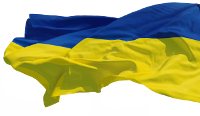кадмий
- 2017-3-4-:28
Cadmium influence on benthic foraminifera of the Black sea shelf (Danube delta region)
The work is devoted to application of the benthic foraminifera for an evaluation of an geoecological situa-tion on a northwest shelf of the Black Sea. The awake role of organisms with carbonaceous function is marked during biological absorption of toxic bonds. The attributes of stressful situations on population and organismic level include a degree of a surviving of species and morphological changes of the foraminifera. These parameters applied for abjection of geographic ranges of a toxic stimulation, development and anomalous morphology of organisms. Purpose. The aim of this work is to analyze the effect of significant cadmium content on benthic foraminifers of the Black Sea shelf (Danube Delta region). Methods. Field studies provided for the selection, documentation and preparation of analytical samples. Micro-paleontological and lithologic-geochemical studies of bottom sediments were carried out in accordance with accepted methods. The method for studying foraminifera includes the following operations: sampling, separation, preservation and preparation for analysis, taxonomic identification, morphological analysis, biomineralogical studies and mathematical processing of results. Results. The conducted observations confirm the possibility of differentiated assessment of heavy metal contamination by the example of cadmium in the shelf Black Sea. Areas of pollution are characterized by a decrease in the species diversity of foraminifera compared to uncontaminated areas. In sediments with a high content of cadmium, foraminifera are characterized by depressed forms with numerous deformities. Conclusions. A significant concentration of cadmium strongly affects the occurrence of foraminifera and the appearance of morphological anomalies in their shells.
Ключові слова:
- 2016-1-2-:25
Content Of Heavy Metals In The Unproductive Lands Of The Kharkiv Region Removed From Agricultural Processing Accepted For Afforestation
In article are analysed the content of heavy metals (cadmium, zinc and lead) in the unproductive lands of the Kharkiv region brought out of agricultural cultivation and recommendations of their rational use for afforestation are made. Purpose. To analyse a state accepted for afforestation of the unproductive lands of the Kharkiv region brought out of agricultural cultivation and to give them an agroecological assessment on the maintenance of exchange forms of heavy metals (cadmium, zinc and lead). Methods. Field, laboratory and analytical (nuclear and absorbing) and mathematical. Results. Despite various types of soils and a considerable variety of categories of the lands transferred under afforestation in the Kharkiv region on the maintenance of exchange forms of heavy metals (cadmium, zinc, lead) of excess of agroecological standards in the studied soils it isn't observed. Conclusions. The use of meadow land with forest reclamation of flood plains is to provide them the plantation or forest fringes with a rare placement with fast-growing species, especially poplar.
- 2014-3-4-:22
Seasonal changes of chemical associations in the sediments on the shelf of the Black sea
Considers modern geochemical characteristics of migration processes in pollution northwestern Black Sea shelf. Bulk precipitation suspension occurs on geochemical barriers "river-sea" or on the shelf outside the aver-age wave field. The main factor limiting the migration of solutes are the processes of biological absorption.Using cluster analysis, multidimensional establish substantial divergence component ratios depending on the time of observation. On the example of cadmium tendency to accumulate the most mobile of toxic components in the carbonate sediments of the shelf.

